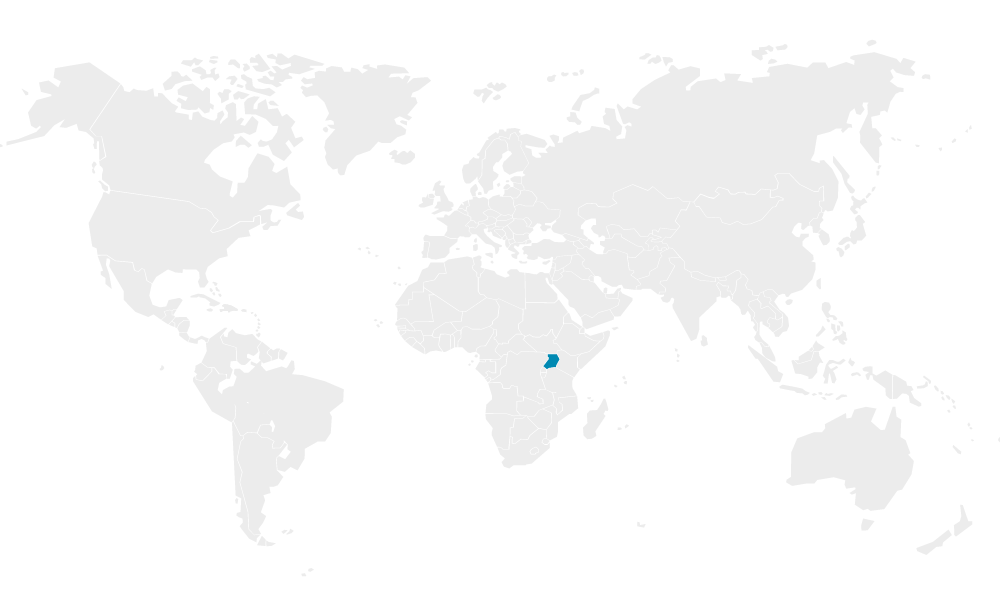Open Data for Developing Economies Case Studies
Uganda’s iParticipate
Open Data for Achieving Better Health Outcomes
by Michael P. Canares, Andrew Young and Stefaan Verhulst
Reference
1 . Project conducted in collaboration with the Web Foundation, United States Agency for International Development (USAID), and the Mobile Solutions, Technical Assistance and Research (mSTAR) program at FHI 360.
2 Special thanks to Akash Kapur who provided crucial editorial support for this case study, and to the peer reviewers who provided input on a pre-published draft.
3 . Swedish Program for ICT in Developing Regions website, http://spidercenter.org/. .
4 . African Health Observatory, “Comprehensive Analytical Profile: Uganda,” WHO, http://www.aho.afro.who.int/profiles_information/index.php/Uganda:Index.
5 . African Health Observatory, “Uganda: Factsheets of health statistics, 2016,” http://www.aho.afro.who.int/profiles_information/images/f/fb/Uganda-Statistical_Factsheet.pdf.
6 . AVERT, “HIV and AIDS in Uganda,” http://www.avert.org/professionals/hiv-around-world/sub-saharan-africa/uganda.
7 . Merlin L. Willcox, et al., “Human Resources for Primary Health Care in sub-Saharan Africa: Progress or Stagnation?” Human Resources for Health, 13, 2015, https://human-resources-health.biomedcentral.com/articles/10.1186/s12960-015-0073-8.
8 . Simon Peter Ogwang, “Fighting Corruption, Empowering People in Uganda’s Health Service,” Transparency International Blog, July 11, 2012, http://blog.transparency.org/2012/07/11/community-empowerment-in-uganda-using-icts-for-better-health-service-delivery/.
9 . Act!onaid, Corruption and the Service Delivery Tragedy in Uganda: Stories from the eastern leg of the anti-corruption caravan, Act!onaid, September 2014, http://www.actionaid.org/sites/files/actionaid/anti-corruption_report.pdf.
10 . Jeremy I. Schwartz, et al., “Toward Reframing Health Service Delivery in Uganda: The Uganda initiative for integrated management of non-communicable diseases,”Global Health Action, 8, 2015, http://www.globalhealthaction.net/index.php/gha/article/view/26537.
11 . African Health Observatory, “Uganda: Health information, research, evidence and knowledge,” WHO, http://www.aho.afro.who.int/profiles_information/index.php/Uganda:Health_information,_research,_evidence_and_knowledge.
12 . Ministry of Health, Republic of Uganda website, http://www.health.go.ug/.
13 . Opendata Barometer, “Rankings and Data: Uganda,” http://opendatabarometer.org/data-explorer/?_year=2015&indicator=ODB&open=UGA .
14 . World Bank, Open Data Readiness Assessment: Uganda, World Bank, http://opendatatoolkit.worldbank.org/docs/odra/odra_uganda.pdf
15 . Development Research and Training, Unlockiing the Potential of a More Harnessed Partnership among Open Data Actors in Uganda, Indigo Trust, November 2015, https://indigotrust.files.wordpress.com/2016/02/drt-indigo-trust-uganda-final-report.pdf.
16 . African Health Observatory, “Uganda: Health information, research, evidence and knowledge, analytical summary,” WHO, http://www.aho.afro.who.int/profiles_information/index.php/Uganda:Health_information,_research,_evidence_and_knowledge#Analytical_summary.
17 . Ministry of Health, Republic of Uganda website, http://hmis2.health.go.ug/#/
18 . African Health Observatory, “Uganda: Overview of the Flows of Information,” WHO, http://www.aho.afro.who.int/profiles_information/index.php/Uganda:Overview_of_the_flows_of_information
19 . Vincent Michael Kiberu, et al., “Strengthening District-based Health Reporting through the District Health Management Information Software System: The Ugandan experience,” BMC Medical Informatics and Decision Making, 14, 2014, http://bmcmedinformdecismak.biomedcentral.com/articles/10.1186/1472-6947-14-40.
20 . Human Resources for Health Information Systems website, http://hris.health.go.ug/reports/.
21 . Jillian Larsen, Uganda: Winning human resources for health, International Budget Partnership, December 2015, http://www.internationalbudget.org/wp-content/uploads/case-study-full-uganda-human-resources-for-health-2015.pdf.
22 . Collaboration on International ICT Policy in East and Southern Africa (CIPESA) website, http://cipesa.org/about-us/.
23 . Swedish Program for ICT in Developing Regions website, http://spidercenter.org/.
24 “CIPESA,” Promoting Human Rights and Democracy Through ICT, http://ict4democracy.org/about/partnerproject-briefs/cipesa/.
25 . Ibid.
26 “Uganda Open Government Data Readiness Study,” CIPESA and Association for Progressive Communications, April 2012, http://cipesa.org/?wpfb_dl=139.
27 “2015 Projects,” CIPESA, http://cipesa.org/projects/.
28 Caroline Wamala Larsson, “SPIDER Stories 2013-2014,” SPIDER Center, 2015, http://spidercenter.org/wp-content/blogs.dir/362/files/2016/11/spider_stories_2013-2014_for_web.pdf.
29 Ashnah Kalemera, “Citizens’ Use of ICTs in Social Accountability in Uganda’s Kasese District,” CIPESA, January 19, 2015, http://cipesa.org/2015/01/citizens-use-of-icts-in-social-accountability-in-ugandas-kasese-district/.
30 Gladys Oroma, Promoting Communit Dialogue on Service Delivery Failures in Northern Uganda,” Promoting Human Rights and Democracy through ICT, February 28, 2015, http://ict4democracy.org/promoting-community-dialogue-on-service-delivery-failures-in-northern-uganda/.
31 . Open Data for Africa, “Uganda Regional Health Statistics Database, 2011,” http://uganda.opendataforafrica.org/lhcqofd/uganda-regional-health-statistics-database-2011
32 . Ministry of Health, Republic of Uganda website, http://hmis2.health.go.ug/#/.
33 . Ministry of Finance Planning and Economic Development, “Uganda Budget Information,” http://budget.go.ug/index.php?p=budget_dashboard.
34 “ICT4Democracy in East Africa: A Year in Review 2015,” CIPESA, 2016, http://cipesa.org/?wpfb_dl=221.
35 . Ushahidi website, https://www.ushahidi.com/.
36 . CIPESA, “Promoting Transparency, Civic Agency and the Right to Information in Northern Uganda’s Peace Recovery and Development Programme,” https://cipesa.crowdmap.com/main.
37 . CIPESA, ICT in Civic Participation and Democracy in Uganda: Citizens’ knowledge, attitudes and practices, CIPESA ICT Policy Research Series, No. 4/15, 2015, http://www.cipesa.org/?wpfb_dl=196
38 . Ibid.



